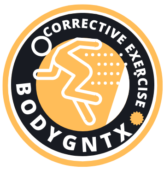Introduction: Undoubtedly, human biomechanics stands as a critical facet within the realm of exercise science, playing an integral role in unraveling the intricacies of how the human body moves and reacts to external forces during physical activities. For fitness trainers and coaches, a profound comprehension of biomechanics becomes indispensable, serving as the linchpin for crafting effective training programs, averting injuries, and fine-tuning athletic performance.
Biomechanical Foundations: At its core, biomechanics delves into the mechanical intricacies of living organisms, honing in on the structure, function, and motion of the human body. Within the sphere of fitness, biomechanics provides valuable insights into the nuanced interactions between the body, exercise equipment, the ground, and various external forces.
Anatomical Considerations: The initial stride in grasping biomechanics necessitates a comprehensive understanding of human anatomy. Trainers are urged to delve deep into the intricacies of bones, muscles, joints, tendons, and ligaments, as this foundational knowledge forms the bedrock for scrutinizing movement patterns and discerning potential limitations.
Joint Mechanics: Venturing into the physics of joint movement, joint mechanics forms a pivotal aspect of biomechanics. Trainers, in this regard, must fathom the intricacies of joint actions, encompassing flexion, extension, abduction, adduction, and more, while appreciating the distinct roles of different joints in various exercises. This nuanced understanding aids in curating exercises that are not only biomechanically sound but also diminish the risk of injury.
Lever Systems: Biomechanics, in its application, leverages the principles of lever systems to elucidate how muscles generate movement around joints. This knowledge proves invaluable for trainers in crafting resistance training programs that not only optimize force production but also enhance the efficiency of muscular engagement.
Muscle Physiology: The intersection of biomechanics with muscle physiology is pivotal in deciphering how muscles generate force and contract during movement. Trainers must factor in aspects such as muscle fiber types, length-tension relationships, and the intricacies of the neuromuscular system when tailoring exercise programs to meet the unique needs of individual clients.
Center of Mass and Stability: Understanding the concept of the center of mass assumes significance in biomechanics, representing the average location of an object’s mass. Trainers must be cognizant of how alterations in body position and external loads can sway stability, a critical consideration when designing exercises that focus on balance and stability.
Gait Analysis: The realm of gait analysis intricately studies the biomechanics of walking and running. Fitness professionals can leverage gait analysis to pinpoint abnormal movement patterns, detect asymmetries, and address imbalances. This wealth of information proves invaluable in crafting corrective exercises and preempting overuse injuries.
Biomechanics in Resistance Training: Guiding exercise selection, load prescription, and form correction, biomechanics assumes a pivotal role in the domain of resistance training. Trainers must unravel the intricate interplay between resistance, joint forces, and muscle activation to create workouts that effectively target specific muscle groups.
Sport-Specific Biomechanics: For coaches immersed in the world of athletes, sport-specific biomechanics takes center stage. Analyzing the biomechanics of movements specific to each sport lays the groundwork for tailoring training programs that not only augment performance but also mitigate the risk of injuries inherent to that particular sport.
Technological Advances: The integration of technology, including motion capture systems and force plates, emerges as a game-changer in biomechanical analysis. This embrace of technology furnishes trainers with quantitative data, facilitating a more nuanced understanding of movement patterns and precise metrics related to athletic performance.
Conclusion: Within the sphere of fitness training and coaching, a profound grasp of human biomechanics imparts a potent toolset, empowering professionals to architect evidence-based, safe, and efficacious exercise programs. By seamlessly integrating biomechanical principles into their practice, trainers elevate the caliber of their services, fortify injury prevention strategies, and optimize the athletic prowess of their clientele. Continuous learning and the application of biomechanical knowledge stand as non-negotiable pillars for staying at the vanguard of the ever-evolving field of fitness science.
Here are some useful links for further understanding and learning on each point mentioned:
- Biomechanical Foundations:
- Anatomical Considerations:
- Joint Mechanics:
- Lever Systems:
- Muscle Physiology:
- Center of Mass and Stability:
- Gait Analysis:
- Biomechanics in Resistance Training:
- Sport-Specific Biomechanics:
- Technological Advances:
